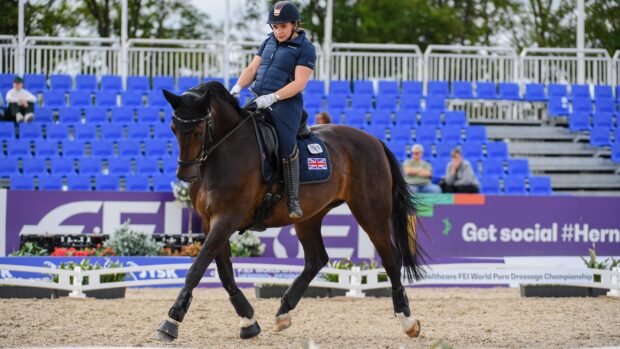Expert advice from HORSE magazine on how to get started in dressage to music
An artistic form of dressage competition, freestyle dressage to music (also known as the Kr) allows participants to perform stipulated movements inany order to the music of their choice. Apart from well executed movements and correct way of going, the selection and interpretation of the accompanying music plays a vital part in scoring maximum marks.
The freestyle test is divided into two sections: technical and artistic. Technical marks are awarded for the movements specified in the test, just like a normal dressage test (but performed in the rider’s choice of order).
The artistic marks are divided into rhythm, energy and elasticity, harmony between horse and rider, choreography, use of arena, creativity, degree of difficulty, choice of music and interpretation.
Choosing the right type of music
Trisha Hammond has earned a reputation as one of Britain’s leading freestyle music tape producers for all levels from Novice to Advanced.
“If riders haven’t tried freestyle before, I often suggest that they play some of their favourite tapes or switch on the radio as part of their everyday schooling sessions,” she says. “It doesn’t matter if you tune in to Radio 1 or Classic FM, as long as when something you like is played, you pick up the beat and try riding different shapes at a pace which feels right.”
When it comes to stepping into the arena, Trisha advises first-timers at the lower levels to play safe in their music choice.
“Essentially you’re performing your test for the judges, so however tempting it may be to go for something funky, bear in mind that the music should have popular appeal.
Although it can be a good idea to use something familiar, try and make sure that it’s not something that everyone else is using. There are certain pieces, such as tunes from popular commercials, which you tend to hear over and over again and I’m sure judges get fed up with them by the end of the season.
“Many riders also choose to have entry music which I think is a good idea. Although it won’t actually gain you any extra marks, it may help to give a more professional feel to your programme and stops you – and the judge – worrying about whether the tape is working!”
How to get your tape right
Before you start thinking about choreography, you need a tape which reflects the rhythm of your horse in all paces.
Work with an instructor to find out what type of music suits your horse’s way of going. It is possible to make your own tape but it’s time-consuming and can be difficult to get a polished finish.
Trisha points out that although riders don’t have to be musical to compete in a freestyle test, it will show if they don’t enjoy riding to music.
When it comes to finding the right kind of music for your competition tape, Trisha advises allowing your personal taste to point you in the right direction.
“There’s no point in expecting the rider to ride to a piece of music she hates as it’s unlikely to inspire the best performance,” she says.
For a polished performance which is likely to encourage maximum artistic marks, competition tapes also need to be recorded so that they play back with the least amount of audible “joins”, so unless you find that friend with access to editing facilities, it’s probably better to go in search of a professional service when you move up the competition ladder.
Do’s and dont’s



